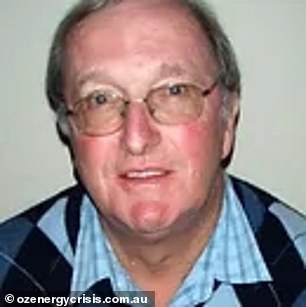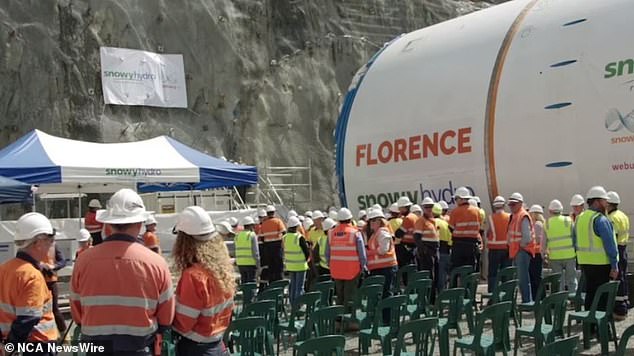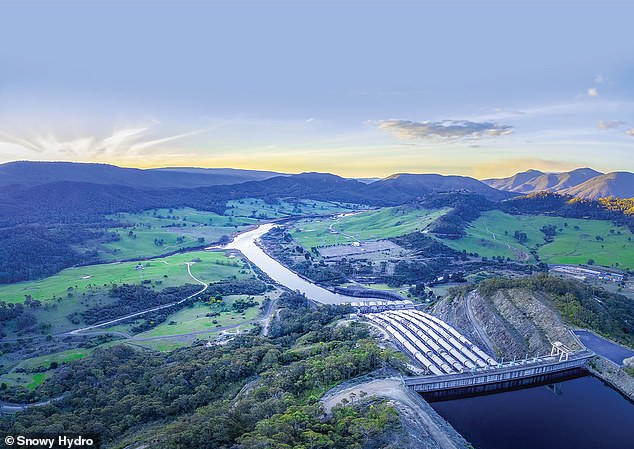Australia’s already spent billions on Snowy Hydro 2.0 – but this energy expert claims the massive project will never produce one watt of power
An energy expert has cast doubt on the commercial viability of the multi-billion dollar Snowy 2.0 project.
Alan Lawrenson claims the project will not generate megawatts of power.
“I don’t think it will have a good commercial return, and in fact there is a chance it will never be completed,” he told Daily Mail Australia.
“I’d love to be proven wrong, but that’s my opinion at this point.”
Mr. Lawrenson is an author on energy issues who previously worked in the scientific field and is an investor in the mining, oil and gas industries.
He said he was recently at a mining conference and the general consensus among energy experts is that the Snowy 2.0 project may be doomed.
“They are very doubtful about the outcome, and there will certainly be no commercial return, any positive commercial return, from the project if it is completed.”
The controversial Snowy Hydro 2.0, which aims to dig the 15 km journey under the Kosciuszko National Park, was launched in March 2022.
The controversial project which aims to excavate the 15 kilometer route under the Kosciuszko National Park was announced in 2017 by then Prime Minister Malcolm Turnbull and construction started in 2019.
Last year it stopped working when a $150 million, 400-ton drill named Florence got stuck.
“It took several months to free itself and so on. We have been at this stage for about a year and we have now covered half a mile and still have 10 miles to go,” Mr Lawrenson claimed.
Mr Lawrenson said he believes the cost of Snowy 2.0 will rise even further.
“If you spend $13 billion of taxpayer money, I think by the time it’s done it’s going to be over $13 billion because these projects have a way of sucking up money.

Alan Lawrenson believes the Snowy 2.0 project will not generate megawatts of power
“I’ve spoken to geologists and they said the drill is going through some of the hardest rock in Australia and the progress it will make will be very slow. Lack of progress obviously means extra costs.’
Mr Lawrenson compared the original Snowy Mountains Scheme, which opened in 1972, to Snowy 2.0.
‘The Snowy One project is one of the greatest engineering feats in the world, and you cannot praise that particular project and the way it has been added, completed and maintained.’
He said that compared to Snowy 2.0, the original plan is excellent because it was designed by engineers, “without much ideological slant in the decision-making process.”
Mr Lawrenson believes a major problem with Snowy 2.0 is that it was “primarily an ideological play, rather than a callous business decision to invest in key infrastructure.”

The Florence machine ‘has been running for about a year at this stage, has now covered 800 meters and still has 16 kilometers to go,’ Mr Lawrenson claimed.

“The Snowy One project is one of the greatest engineering feats in the world,” Mr Lawrenson said
On alternatives to the troubled Snowy 2.0 project, Mr Lawrenson said: ‘There are two possible ways out of the trouble we are in now. One of these is the construction of two HELE (High Efficiency, Low Emissions) coal-fired power stations, one in Queensland and one on the border with Victoria or New South Wales.’
He said the cost would be around A$4 billion per gigawatt of production, claiming this would “take pressure off everywhere.”
‘The cost of the energy produced is very low, and the pollution, the amount of C02, in the general sense that goes into the atmosphere, is no more than perhaps equivalent energy sources.’
Mr Lawrenson said another alternative was nuclear power.
‘Make a commitment early on for small modular reactors and place them where coal-fired power stations are being closed, because you already have the distribution infrastructure in place.’
